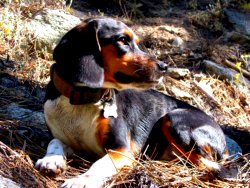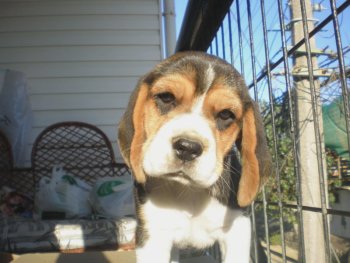The Beagle Dog is Loyal and Eager to Please

Beagle Dog
The Beagle dog, a hunting dog renowned for its sense of smell and pack mentality, has an average lifespan of somewhere between 12 and 15 years and should weigh between 20 and 25 pounds for a full-grown male. If you’re buying a pure breed, you should look out for a solid and muscular body, and a long tail, with brown eyes and tri-colored fur. In terms of its temperament, you’re looking for a loyal dog that is eager to please and acts passively around other dogs.
History of the Breed
Small scent dogs have existed for thousands of years around the world, and there are mentions of them in Ancient Greek writings. The first forerunner of the modern Beagle dog, the Talbot hound, goes back to 1066 where it was a companion dog for William the Conqueror. Since then, the Beagle breed has gone through many changes including Queen Elizabeth I's pocket breed that would bay on the tables at royal functions.
The Beagle dog, as it is today, is used primarily as a hunting dog for rabbits or as a family pet. They have an excellent sense of smell, and enjoy the pack mentality of a large group of humans or dogs. The dogs came to America in the early 19th century, and were officially recognized by the American Kennel Club in 1884. Since then, they have become one of the top ten most popular breeds in the United States for the last 30 years for their loyalty and generally positive demeanor.
Owning a Beagle Dog

Beagles are intelligent dogs and as with all smart breeds, they need plenty of exercise and engagement to keep them mentally stimulated. Their small stature means that long walks will tire them out quickly, so you will be better off going to a dog park where they can socialize, play and rest at their own leisure. At home, if you're leaving them unattended for extended periods you'll need to provide them with suitable play toys.
In terms of training, they are very eager to please and enjoy human praise and contact. However, they are primarily a scent hound and initially they will completely ignore you if they catch a whiff of anything interesting. This can be trained out of them with rewards of playing and praise, but you will be well advised to play scent games with them to allow this part of their instinctive behavior to come out. Their addiction to finding new scents will mean you will still need to keep them on a close leash in new and unfamiliar territory.
Owners of cats and rabbits will also need to keep in mind the Beagle's hunting history and it may be prudent to have separate areas for the different animals.
Finally, a word of warning for people living in built up areas. The Beagle has a very distinctive bark, which sounds more like a baying howl than a regular bark. When the dog becomes upset or over excited, they can bay for a long time, and the noise level is surprisingly loud for such a small animal. While this does make them excellent guard dogs, it can cause problems with the neighbors if left unchecked.
Health Concerns

The Beagle dog has a low center of gravity meaning that it is susceptible to back problems in later life. You can avoid this by making sure that you're feeding the dog a healthy diet and avoiding weight issues. They are also prone to chrondoplasia, where the front legs become bowed at an early age. If your dog does have this disease, your vet will advise you on exercise routines to help build muscles and strength in their front legs. Lastly. Beagles are more prone to epilepsy than other dogs, but your vet will be able to run tests on them as a puppy to find out if they have it or not and will prescribe the appropriate medication.

Return from Beagle Dog to Dog-Breeds-Explorer Homepage